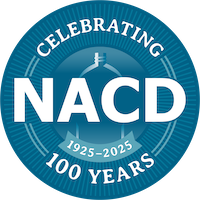Blog Post: Avoiding Carbon Tunnel Vision in the Packaging Industry
Introduction
Carbon tunnel vision occurs when sustainability efforts focus solely on reducing carbon emissions, neglecting other critical environmental and social impacts like eutrophication, human rights, and land use changes. This narrow focus limits the potential for a more holistic, systems-based approach to sustainability. As sustainability expert Jan Konietzko emphasizes, businesses must adopt a comprehensive data strategy to address these interconnected impacts and unlock greater value.
Carbon vs. Environmental Footprint
In the packaging industry, the carbon footprint measures the total greenhouse gas emissions (e.g., CO₂, CH₄, N₂O) from the production, transportation, use, and disposal of packaging materials, with key contributors being energy consumption, raw materials, transportation, and end-of-life treatment. The environmental footprint, however, is broader, encompassing not only carbon emissions but also other impacts like water usage, waste generation, resource depletion, pollution, and biodiversity loss. While the carbon footprint is a subset, the environmental footprint provides a more comprehensive view of a packaging material’s overall impact on the planet.
Life Cycle Assessments
To measure and manage impacts like eutrophication, air pollutants, and biodiversity, organizations start with an LCA, which maps the product system, gathers data, and considers multiple environmental impact categories beyond carbon emissions. This holistic approach helps avoid carbon tunnel vision by providing a broader view of sustainability, recognizing trade-offs, and enabling confident reporting on a variety of environmental metrics.
Existing LCA Assessments
When reviewing existing LCAs, ensure they are recent, use identical functional units for fair comparison, and cover multiple environmental impact categories. Pay attention to the reputation of the authors, potential biases, and whether the study is peer-reviewed. Also, check if the LCA is cradle-to-gate or cradle-to-grave and whether it clearly defines system boundaries for accurate comparison.
Company Examples
Leading packaging companies like Unilever, Nestlé, Coca-Cola, and PepsiCo are expanding their sustainability efforts beyond carbon emissions by incorporating broader environmental impacts such as water usage, waste reduction, and biodiversity. Through initiatives like using sustainable materials, improving recyclability, and innovating with plant-based packaging, they aim to reduce their overall environmental footprint. These efforts reflect a growing commitment to holistic sustainability in packaging design and production.
Thoughts for the Future
- LCAs are crucial in avoiding carbon tunnel vision and ensuring compliance with EPR programs, which incentivize more sustainable packaging practices through eco-modulated fees.
- As data availability in sustainability improves, LCAs will become more comprehensive,moving beyond carbon to cover a broader range of environmental impacts.
- Standardization of LCA methodologies and impact categories across industries, like packaging, will likely grow to ensure better comparability and trust in sustainability metrics.
Resources
- Webster. M. (2024, Sept. 30). How Life Cycle Assessment (LCA) Help Avoid Carbon Tunnel Vision. Clean Agency. https://cleanagency.com/blog/f/how-life-cycle-assessments-lca-help-avoid-carbon-tunnel-vision
- Do Good People. (n.d.). How to avoid carbon tunnel vision? https://www.dogoodpeople.com/csr-trends/climate-action/decarbonization/how-to-avoid-carbon-tunnel-vision/
- Jager, A. (2022, June 24). The Carbon Tunnel Vision Trap. Nexio Projects. [Digital image]. https://blog.nexioprojects.com/the-carbon-tunnel-vision-trap
- Konietzko, J. (2022, Geb. 8). Moving beyond carbon tunnel vision with a sustainability data strategy. Cognizant. https://www.cognizant.com/us/en/insights/insights-blog/moving-beyond-carbon-tunnel-vision-witha-sustainability-data-strategy-codex7121
- Arond, E. (2022, Mar. 28). It’s time to move beyond “carbon tunnel vision.” SEI. https://www.sei.org/perspectives/move-beyond-carbon-tunnel-vision/
- Konietzko, J. (2023). Sustainable Business Model Design. LinkedIn. [Digital image]. https://www.linkedin.com/posts/jankonietzko_just-received-a-copy-of-the-book-sustainable-activity -6927943267837747201-e1uK/
- Bite. (n.d.). Carbon Footprint vs. Ecological Footprint: We Explain the Difference. https://bitetoothpastebits.com/blogs/blog/carbon-footprint-vs-ecological-footprint?srsltid=AfmBOo q-3efiQFClyNRSzy__yXRhfr8Mw2TQpTWD81-5kZHc0fCRt_1u
- Ecochain. (2024, June 10). Carbon tunnel vision: are you excluding crucial environmental data? https://ecochain.com/blog/danger-carbon-tunnel-vision/ Mckee, N. (2022, Nov. 16). How to Avoid Carbon Tunnel Vision.
- Trayak. https://trayak.com/how-to-avoid-carbon-tunnel-vision/ Mol, G., Walter, C. (2024, Nov. 14). Life Cycle Assessment (LCA) explained.
- Root. https://root-sustainability.com/blogs/life-cycle-assessment/ Ecochain. (2024, July 15). From data to impact data: Impact Assessment in LCA (LCIA). https://ecochain.com/blog/lcia-in-lca-explained/ 1000 Logos. (n.d.). ISO Logo. [Digital image]. https://1000logos.net/iso-logo/
- Rodrigues, D. (2024, Mar. 27). LCA (Life Cycle Assessment): The 4 Stages. Carbon Bright. https://carbonbright.co/lca-life-cycle-assessment-the-4-stages
